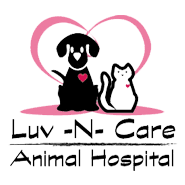Library
-
There are many types of emergencies, but initial care is similar: stay calm, keep your dog warm and quiet, contact your veterinarian, and get help to transport your pet to a veterinarian. Common emergencies are described including gastric dilatation and volvulus (GDV), acute hemorrhagic diarrhea, anaphylaxis, automobile injury, seizures, respiratory distress, eye injury, eclampsia, heatstroke, heart failure, toxin ingestion and collapse.
-
Enalapril is used on and off label and is given by mouth or injection to treat heart failure, high blood pressure, chronic kidney disease, or proteinuria. Common side effects include loss of appetite, vomiting, diarrhea, and tiredness. Do not use in pets that are allergic to it, have an acute kidney injury, or have certain heart conditions.
-
EndoBlend™ is a blend of phytocannabinoids such as cannabidiol (CBD) and beta-caryophellene, designed to support overall health in dogs. It may benefit dogs with chronic pain, seizures, anxiety, and cancer. Consult with a veterinarian for proper usage and monitoring.
-
Endocarditis is an infection of a heart valve, most often affecting the mitral or aortic valve. It can arise any time that bacteria enter the bloodstream, though it is more common when the heart valve has already been damaged for some other reason. This handout discusses the causes, clinical signs, diagnosis, treatment, and prognosis of this condition.
-
Endosorb® is an anti-diarrhea supplement that supports intestinal function and soothes the gastrointestinal tract in pets such as dogs, cats, horses, and cattle. It is available in various forms, including tablets and liquid suspension.
-
Dilated Cardiomyopathy in Dogs
La cardiomiopatía es una degeneración del músculo cardiaco que hace que el corazón, que es básicamente una máquina de bombeo, desarrolle una insuficiencia de forma progresiva.
-
La enfermedad de Cushing es una condición en la cual las glándulas adrenales producen excesiva cantidad de ciertas hormonas. El término médico para esta enfermedad es hiperadrenocorticismo.
-
Heartworm Disease in Dogs
La enfermedad de los gusanos del corazón o dirofilariosis es una enfermedad grave y potencialmente fatal. Está causada por un parásito sanguíneo llamado Dirofilaria immitis.
-
Anal Sac Disease in Dogs
Popularmente denominados 'glándulas anales' son dos pequeñas bolsas situadas a ambos lados del ano aproximadamente hacia las 4 y las 8 en punto. Están cubiertos de numerosas glándulas sebáceas (cutáneas) especializadas que producen una secreción de olor desagradable.
-
Lyme Disease in Dogs
La enfermedad de Lyme está causada por una espiroqueta, Borrelia burgdorferi. Una espiroqueta es un tipo de bacteria. La enfermedad de Lyme se transmite a los perros a través de la picadura de una garrapata. Una vez en el torrente sanguíneo, el organismo de la enfermedad de Lyme será transportado a diferentes partes del cuerpo y puede llegar a las articulaciones. Antes se pensaba que sólo un tipo concreto de garrapatas podían transmitir la enfermedad, pero ahora parece ser que muchos tipos de especies están implicadas. El tipo más común de garrapata portadora de la enfermedad de Lyme es la garrapata ciervo.

